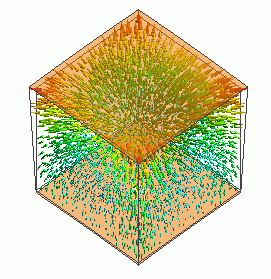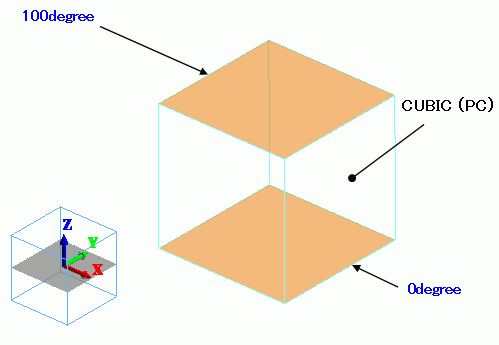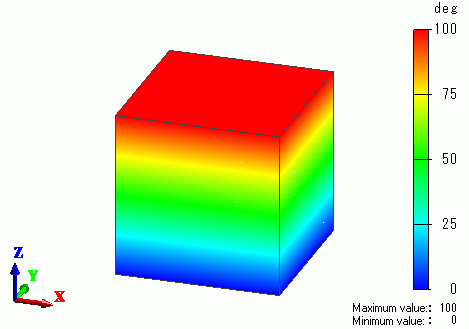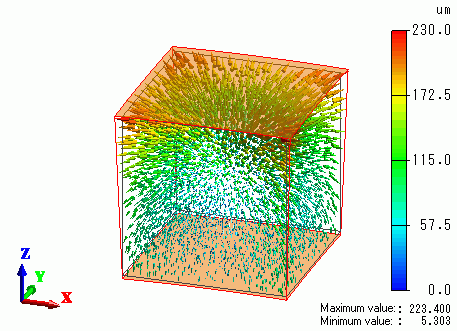
CAE Software【Femtet】Murata Software Co., Ltd.

Example1 Deformation due to the Temperature Gradient #1 – Single Material

General
-
The deformation due to the temperature gradient on a singe-material cube is analyzed.
-
The temperature gradient caused by the heating chip is calculated by thermal analysis [Watt].
The result is forwarded to mechanical stress analysis [Galileo] as a thermal load.
-
The deformation, the displacement and the mechanical stress are solved.
-
Unless specified in the list below, the default conditions will be applied.
Analysis Space
|
Item |
Settings |
|
Analysis Space |
3D |
|
Model unit |
mm |
Analysis Conditions
Select Thermal analysis and Mechanical stress analysis.
|
Item |
Settings |
|
Solver |
Thermal analysis [Watt] |
|
Thermal-Analysis Type |
Steady-State Analysis |
|
Options |
N/A * |
* “Thermal Load” is selected by default for the thermal load-mechanical stress coupled analysis.
The Step/Thermal Load tab is set as follows.
|
Tabs |
Setting Item |
Settings |
|
Step/Thermal Load * |
Reference temperature |
0[deg] |
* The reached temperatures come from the thermal analysis.
Model
The model is a cubic solid body. The material is the polycarbonate. The temperature is fixed at the top and bottom faces.

Body Attributes and Materials
|
Body Number/Type |
Body Attribute Name |
Material Name |
|
0/Solid |
CUBIC |
002_Polycarbonate(PC) * |
* Available from the Material DB
Boundary Conditions
Thermal analysis is performed based on the boundary conditions below. The resulting temperature distribution is forwarded to mechanical stress analysis.
|
Boundary Condition Name/Topology |
Tab |
Boundary Condition Type |
Settings |
|
100degree/Face |
Thermal |
Temperature |
100[deg] |
|
0degree/Face |
Thermal |
Temperature |
0[deg] |
Results
The temperature distribution as a result of Watt is shown below.

The next figure shows the vectors of displacement as a result of Galileo following Watt.

The expansion is larger at the top of the model.

